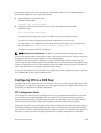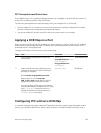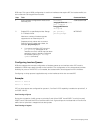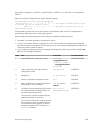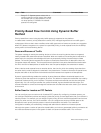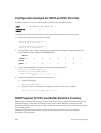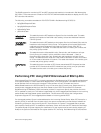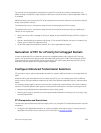
Configuration Example for DSCP and PFC Priorities
Consider a scenario in which the following DSCP and PFC priorities are necessary:
DSCP 0 – 5, 10 - 15 20 – 25, 30 – 35
Expected PFC
Priority
1 2
To configure the aforementioned DSCP and PFC priority values, perform the following tasks:
1. Create class-maps to group the DSCP subsets
class-map match-any dscp-pfc-1
match ip dscp 0-5,10-15
!
class-map match-any dscp-pfc-2
match ip dscp 20-25,30-35
2. Associate above class-maps to Queues Queue assignment to be based on the below table (This
internal table has been modified for S6000 platform) .
Table 14.
Internal-
priority
0 1 2 3 4 5 6 7
Queue 1 2 0 3 4 5 6 7
3. Dot1p->Queue Mapping Configuration is retained at the default value.
Default dot1p-queue mapping is,
Dell#show qos dot1p-queue-mapping
Dot1p Priority : 0 1 2 3 4 5 6 7
Queue :2 0 1 3 4 5 6 7
4. Interface Configurations on server connected ports.
a. Enable DCB globally.
Dell(conf)#dcb enable
b. Apply PFC Priority configuration. Configure priorities on which PFC is enabled.
Dell(conf-if-te-1/1/1)#pfc priority 1,2
SNMP Support for PFC and Buffer Statistics Tracking
Buffer Statistics Tracking (BST) feature provides a mechanism to aid in Resource Monitoring and Tuning
of Buffer Allocation. The support for Max Use Count mode in Buffer Statistics is introduced in Dell
Networking OS 9.3(0.). Max Use Count mode provides the maximum value of the counters accumulated
over a period of time.
Priority Flow Control (PFC) provides a link level flow control mechanism, which is controlled
independently for each frame priority. The goal of this mechanism is to ensure zero loss under
congestion in DCB networks.
262
Data Center Bridging (DCB)




